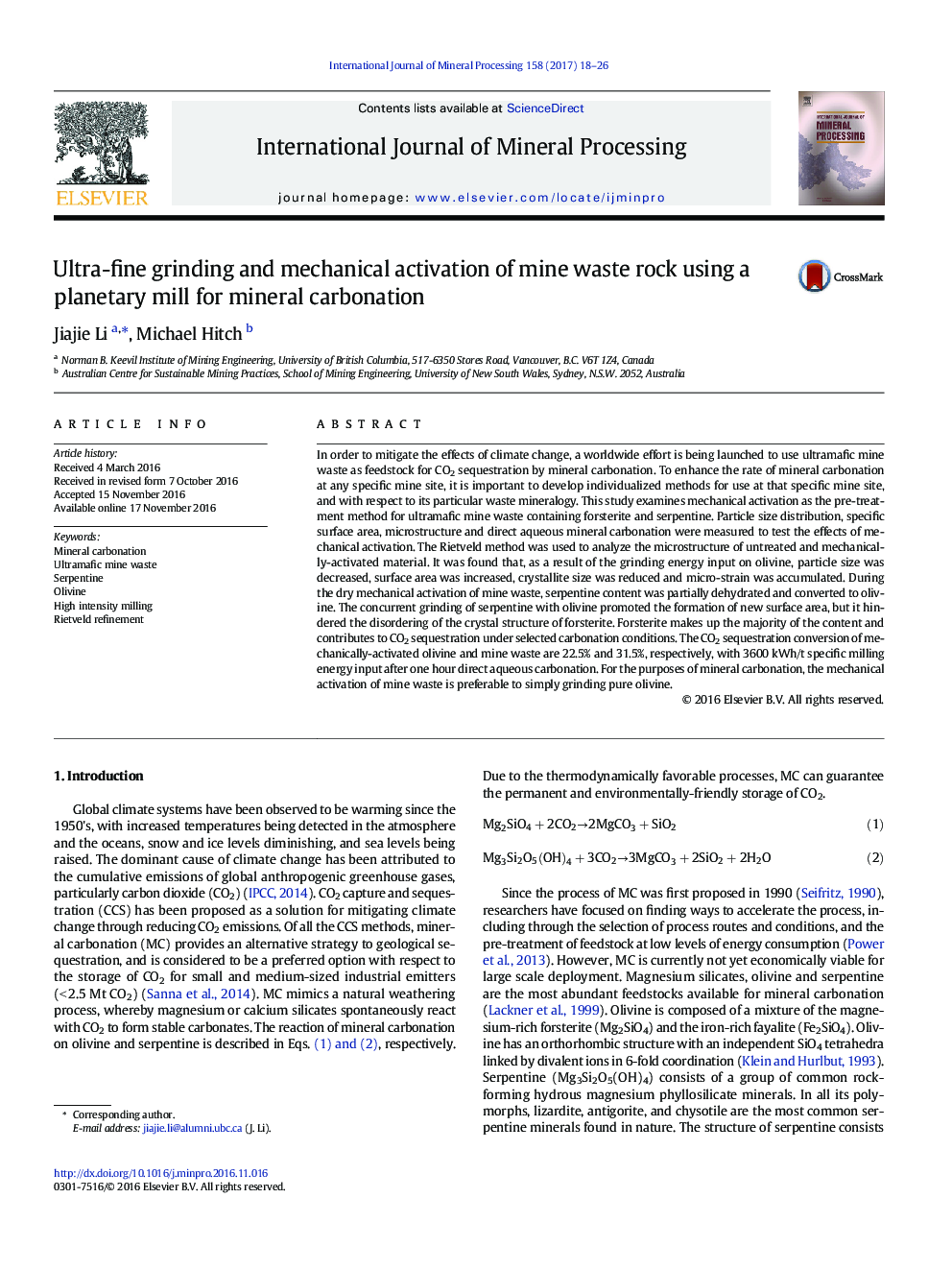| کد مقاله | کد نشریه | سال انتشار | مقاله انگلیسی | نسخه تمام متن |
|---|---|---|---|---|
| 4769221 | 1425775 | 2017 | 9 صفحه PDF | دانلود رایگان |
- Serpentine is partially dehydrated and converted to olivine by intensive dry grinding.
- Minor water formed by serpentine dehydration changes the dry grinding into kneading.
- Serpentine reduces the effect of mechanical activation in disorder olivine's structure.
- 3600Â kWh/t energy input can improve the carbonation conversion from 8.7% to 31.7%.
In order to mitigate the effects of climate change, a worldwide effort is being launched to use ultramafic mine waste as feedstock for CO2 sequestration by mineral carbonation. To enhance the rate of mineral carbonation at any specific mine site, it is important to develop individualized methods for use at that specific mine site, and with respect to its particular waste mineralogy. This study examines mechanical activation as the pre-treatment method for ultramafic mine waste containing forsterite and serpentine. Particle size distribution, specific surface area, microstructure and direct aqueous mineral carbonation were measured to test the effects of mechanical activation. The Rietveld method was used to analyze the microstructure of untreated and mechanically-activated material. It was found that, as a result of the grinding energy input on olivine, particle size was decreased, surface area was increased, crystallite size was reduced and micro-strain was accumulated. During the dry mechanical activation of mine waste, serpentine content was partially dehydrated and converted to olivine. The concurrent grinding of serpentine with olivine promoted the formation of new surface area, but it hindered the disordering of the crystal structure of forsterite. Forsterite makes up the majority of the content and contributes to CO2 sequestration under selected carbonation conditions. The CO2 sequestration conversion of mechanically-activated olivine and mine waste are 22.5% and 31.5%, respectively, with 3600Â kWh/t specific milling energy input after one hour direct aqueous carbonation. For the purposes of mineral carbonation, the mechanical activation of mine waste is preferable to simply grinding pure olivine.
Journal: International Journal of Mineral Processing - Volume 158, 10 January 2017, Pages 18-26
